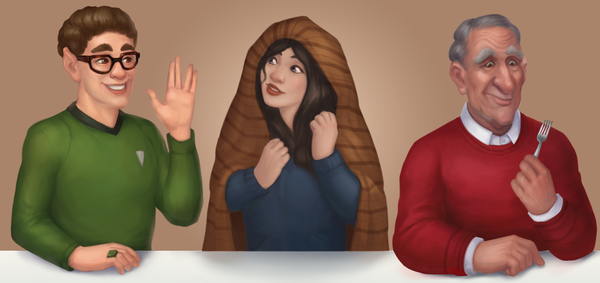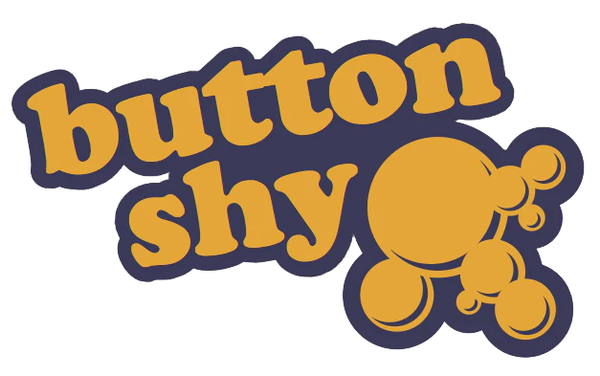
Find Your Seats Designer Diary
Share
Find Your Seats Designer Diary
by Mitchell Shipman

The Invitations Are Sent (Introduction and backstory)
 Hello! My name is Mitchell Shipman and I love designing games. Well, I love designing parts of games. Usually, I come up with a cool mechanic and can never think of a way to wrap an actual, complete game around it. My first attempt was trying to model an aggro mechanic from an MMO into a pseudo-grid based card game. The sky was my limit in terms of components, but I stuck with cards because I was deep in the black hole of MtG at the time.
Hello! My name is Mitchell Shipman and I love designing games. Well, I love designing parts of games. Usually, I come up with a cool mechanic and can never think of a way to wrap an actual, complete game around it. My first attempt was trying to model an aggro mechanic from an MMO into a pseudo-grid based card game. The sky was my limit in terms of components, but I stuck with cards because I was deep in the black hole of MtG at the time.
Sometime later, I had ordered a prototype and gotten my friends around the table to play. We started and it was great! Until- someone figured out how to completely break the game. It was crushing, close to embarrassing. I put all the cards back in the box, stuck it on a shelf and never touched it again.
Years later, I had a regular game group again and bits and pieces of games started to invade my thoughts. However, they were just that: bits and pieces. I started looking around online for inspiration. I loved the idea of game jams like Ludum Dare, but I could never complete a full game by myself in time, so I started to search for strictly jams/competitions for board games.
I found one and poured myself into it. Having the restrictions dictated by the competition levied upon me, I was afire. I still had the option of using any and every component available, but I had a budget. The problem of design became two-fold: making the game itself, but also solve the optimization problem of doing it at or under cost. And I loved the competition for that.
Oddly enough, that competition was for a different game than what this post is about. While I was in the midst of the other design, I stumbled upon Button Shy’s 2016 Wallet Game competition: make a game with 18 cards. The challenge was too good to pass up!
Preparing the Guest List (Theme or Mechanics?)
My personal favorite games are Euros. As a result, I am usually much more of a “mechanics over theme” kind of guy. However, with only 18 cards I couldn’t throw tiny wooden cubes at my problems until they went away. I had to get out of my comfort zone, so I turned to a theme-first approach.
At the time, my team at work had just started having weekly lunches together. Unfortunately, I am not the best in social situations with more than five people, even if they were people I’d worked with for years. As we sat and ate, I never really participated in the conversation. Instead, like in most situations, I was an observer more than a participant- unless I was seated next to certain members of the group.
In my observations, I noticed our group was made up of multiple “generations”: folks that had been with the company for thirty years, people like myself that had been there for a handful, and a couple of interns. These age groups formed natural cliques, and our conversations varied wildly, but based on our seating configuration there was always either a lot or a little conversation. Thus, the idea for Find Your Seats was born.
So how do I convert that experience to a game? Moreover, how do I convert that experience to a game and completely remove my personal social anxiety from the equation? Also, how do I do that in enough time for the Button Shy’s competition?

Setting the Table (Design)
Where to go from there? I had a theme idea, an eighteen-card restriction, and about a month left. I am a big fan of drafting and, thanks to having a theme that fit nicely with that mechanic, having the players’ physical positions be important. With a theme of people eating a meal at a table, I couldn’t pass up the opportunity to try and be super-meta: have a game of sitting people around a table being played by people actually sitting around a table.
I knew I wanted to model the interactions (or lack thereof) I had at my team lunches, so I decided every card would represent a person that would be placed around a “table,” and that each card would talk to its neighbors. From that point the seating mechanic essentially developed itself. I wanted some unknown information for every player configuration, so it was a natural fit for each player to be dealt four cards and then have some cards remain face down in the center.
Since I wanted the cards to “talk” they had to have something to “talk” about. Thus, the idea of the various conversation topics came to be, which lent itself to a set collection mechanic. So cards could “talk” if they had matching symbols. But what if you just got a terrible hand? I thought of the generational gap of my team and age became a factor as well. Logically, this made sense to me as people around the same age generally can find something to talk about.
So now all I needed was a way to win: points! Do your characters have something to talk about with each other? Get points! Are they around the same age? More points! This includes cards that are placed next to your opponents, so you can get and give points to and from them based on your positioning. I was happy with the design so far, but each card was meant to represent a person, and right now a collection of symbols and an age didn’t feel unique enough to be a “real” person.
This led to one of the most fun parts of the design: mapping card abilities to archetypes and caricatures of people I know or things I thought were funny. This was probably the most fluid and natural part of the process, giving each card a “personality” based on their symbols and age, and an ability that matched it. As a result of the abilities, it made sense to give the characters genders as well, that didn’t directly give points (because we’re all human :D ), but allowed for more flexibility in abilities.
And that was basically the design, it was one of the most natural and organic designs I’ve completed and I’m incredibly proud of it! My regular playgroup helped me playtest over the course of the competition and morphed it into the game it is today.
Main Course (Competition and Development)
The next step was to submit the game. I made a video, submitted it, and waited. Eventually, Button Shy contacted me and asked if they could publish it. This was my first publishing offer ever and I accepted immediately! Life goal achieved! Elation!
Button Shy has been super helpful. I never really considered the difference between development and design, but now I realize what a huge difference there is between the two. They’ve been great to work with and have turned my prototype of artless, bland, functional cards into something inviting and warm to look at. I get more excited with each piece of art that is released and am anxiously awaiting for the Kickstarter to launch in January.
Dessert (Other ramblings)
In addition to the base set of cards, we also wanted to have more to pull from during the Kickstarter. I’ve been designing new people to join the others at the table, which is still as fun as it was in the beginning, but this time I based them less on pseudo-realistic people and more on anything I can think of. Vampires? Robots? Cthulhu cultists? Why not? Anything goes!
This entire process has been a surreal experience that I am very thankful to have had. This might have been more “diary” and less “designer” but thank you for reading my ramblings so far! If you have any questions about the game or my process, feel free to shoot me a message or contact me on twitter (@nineStoneGolem). I might have social anxiety in real-life but it generally doesn’t extend to the internet.

